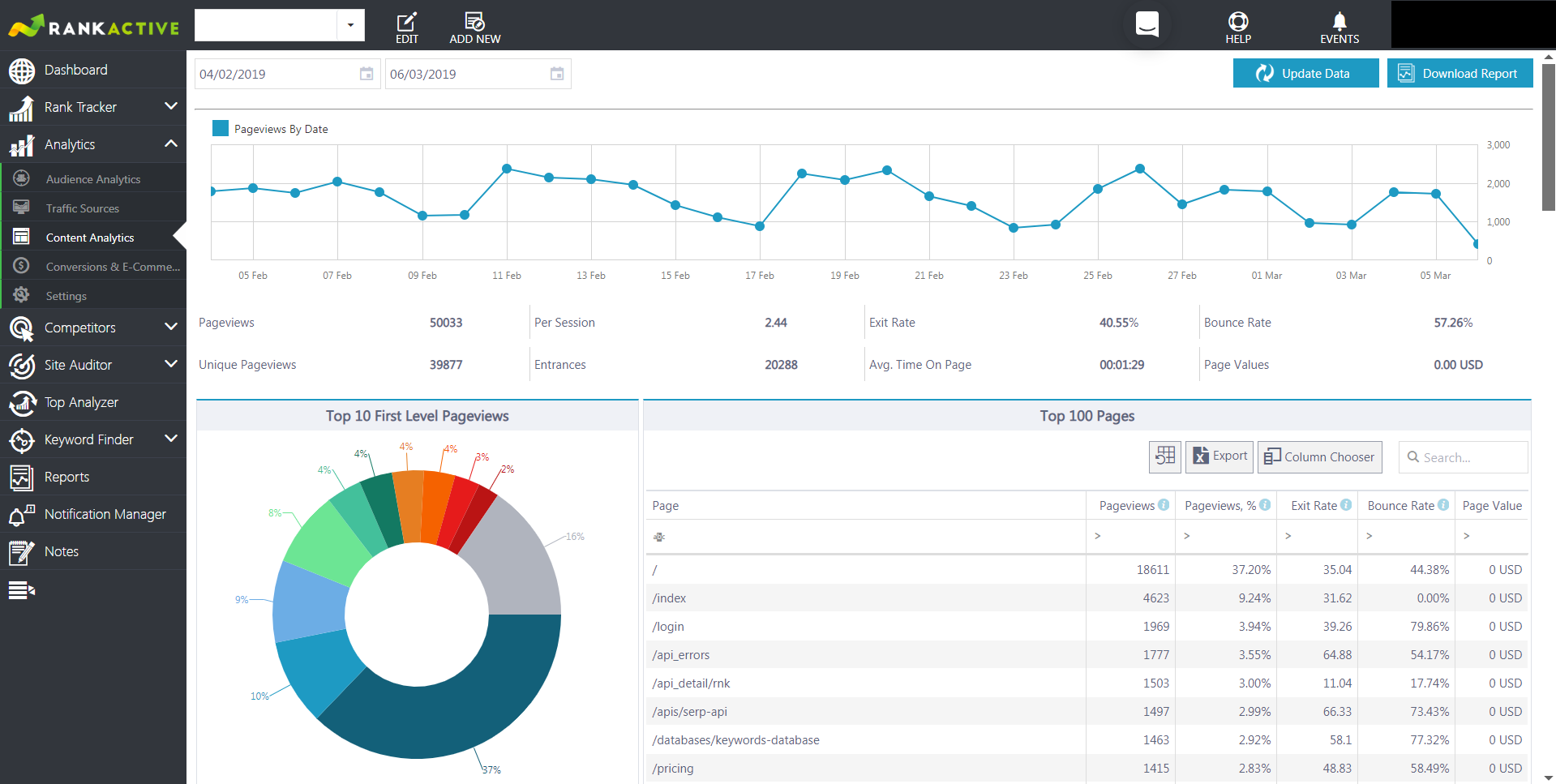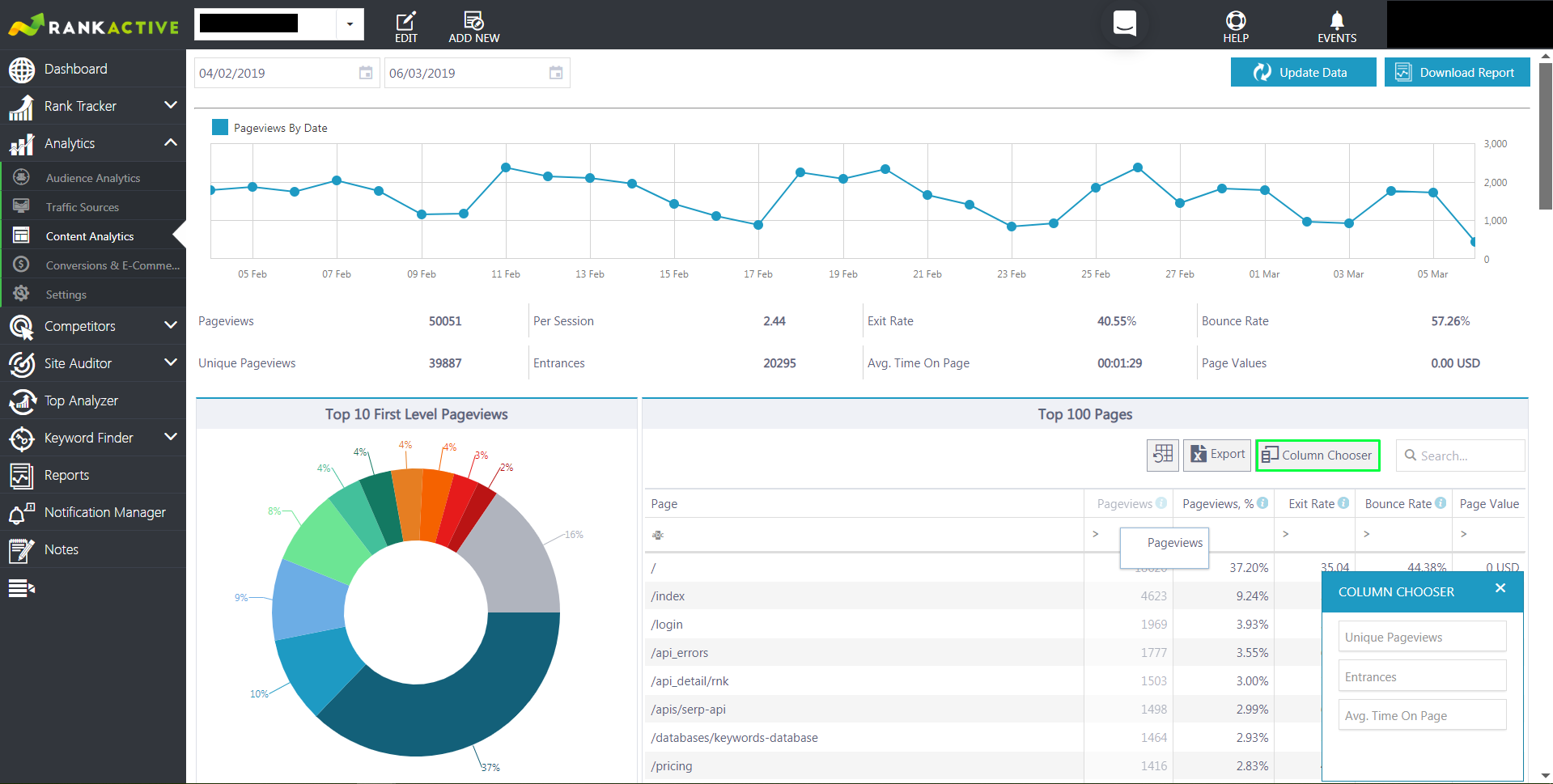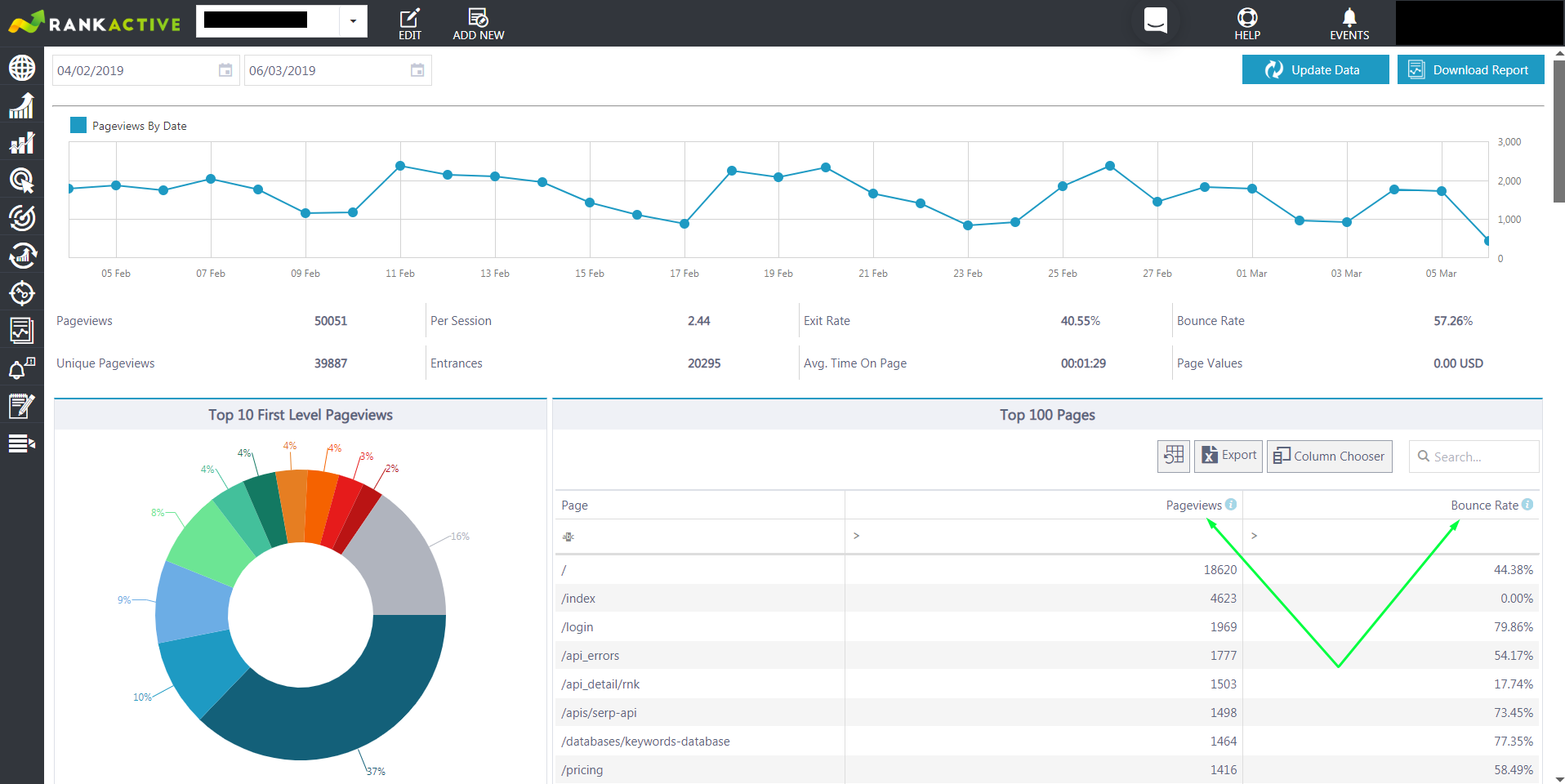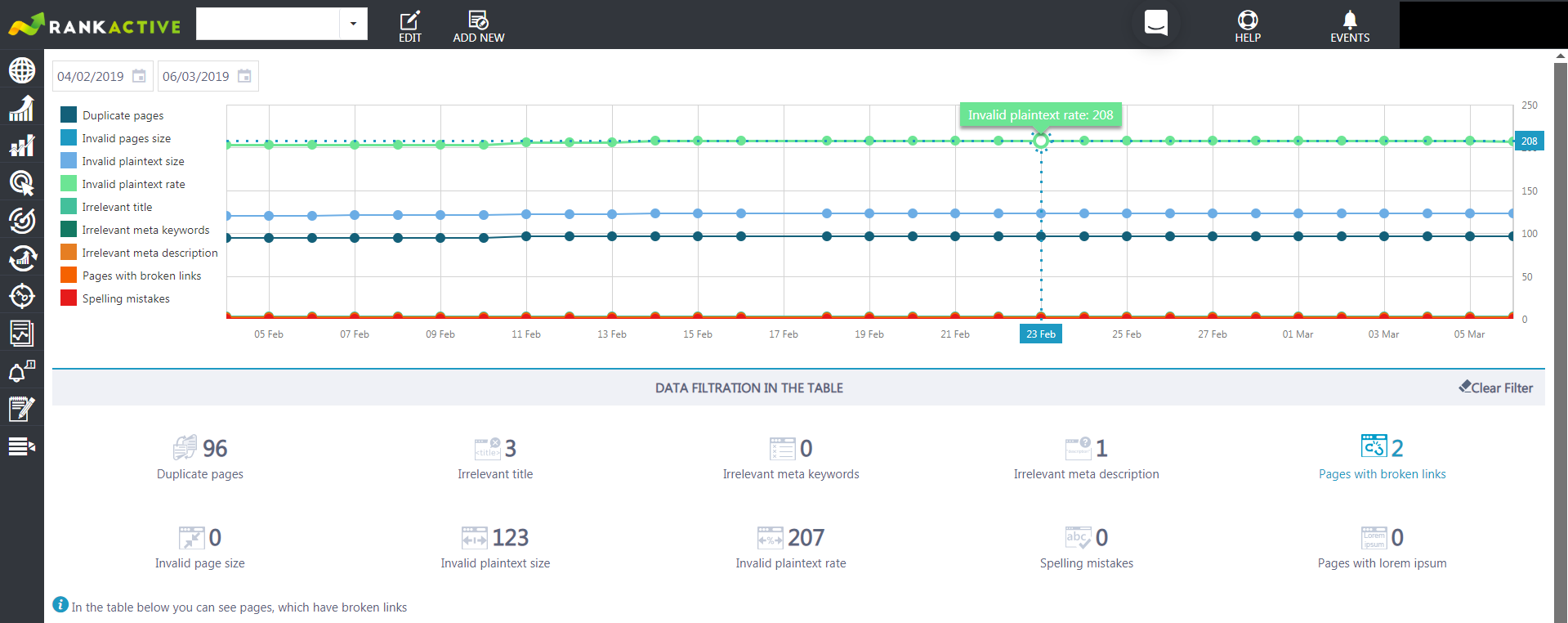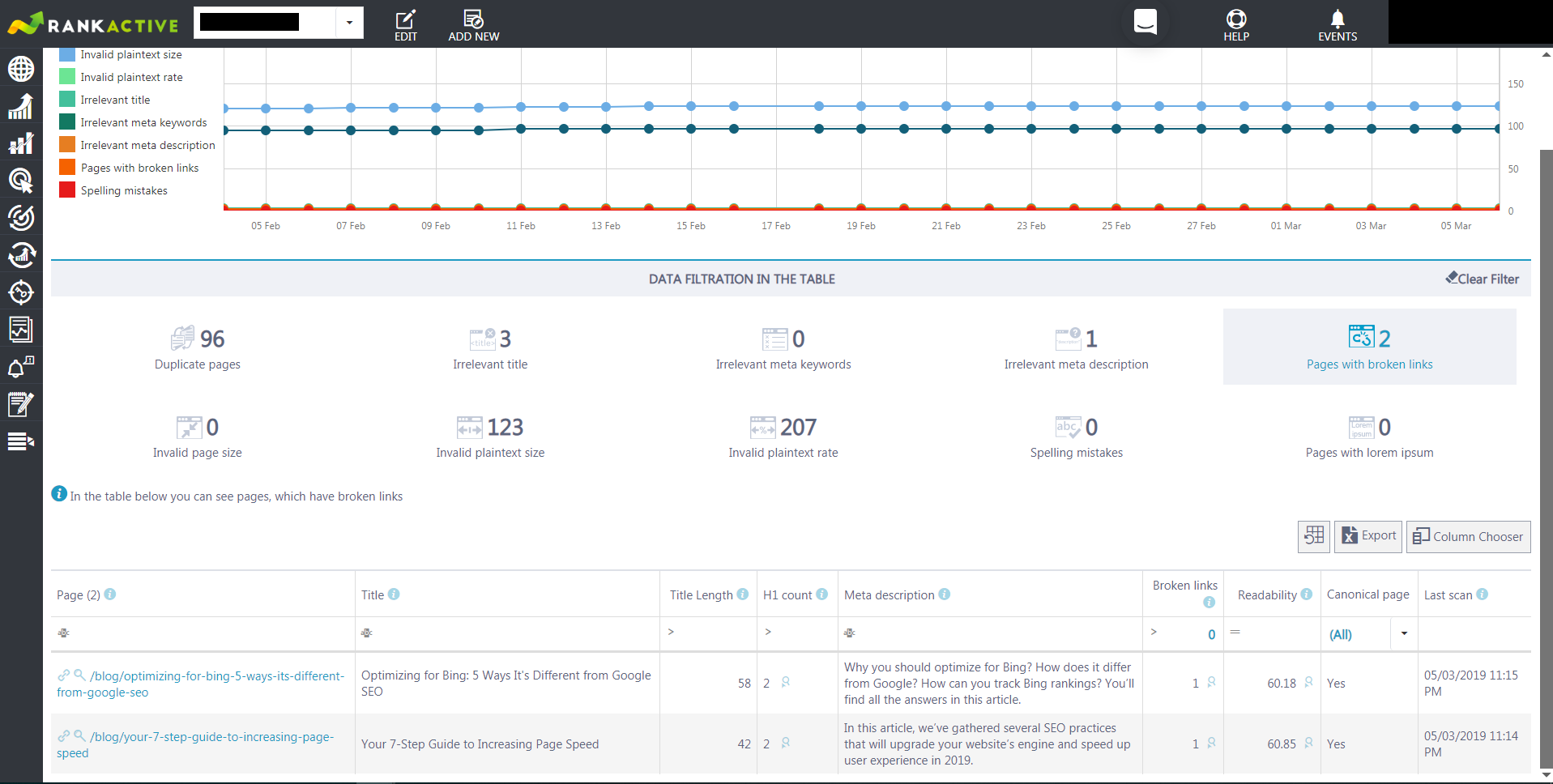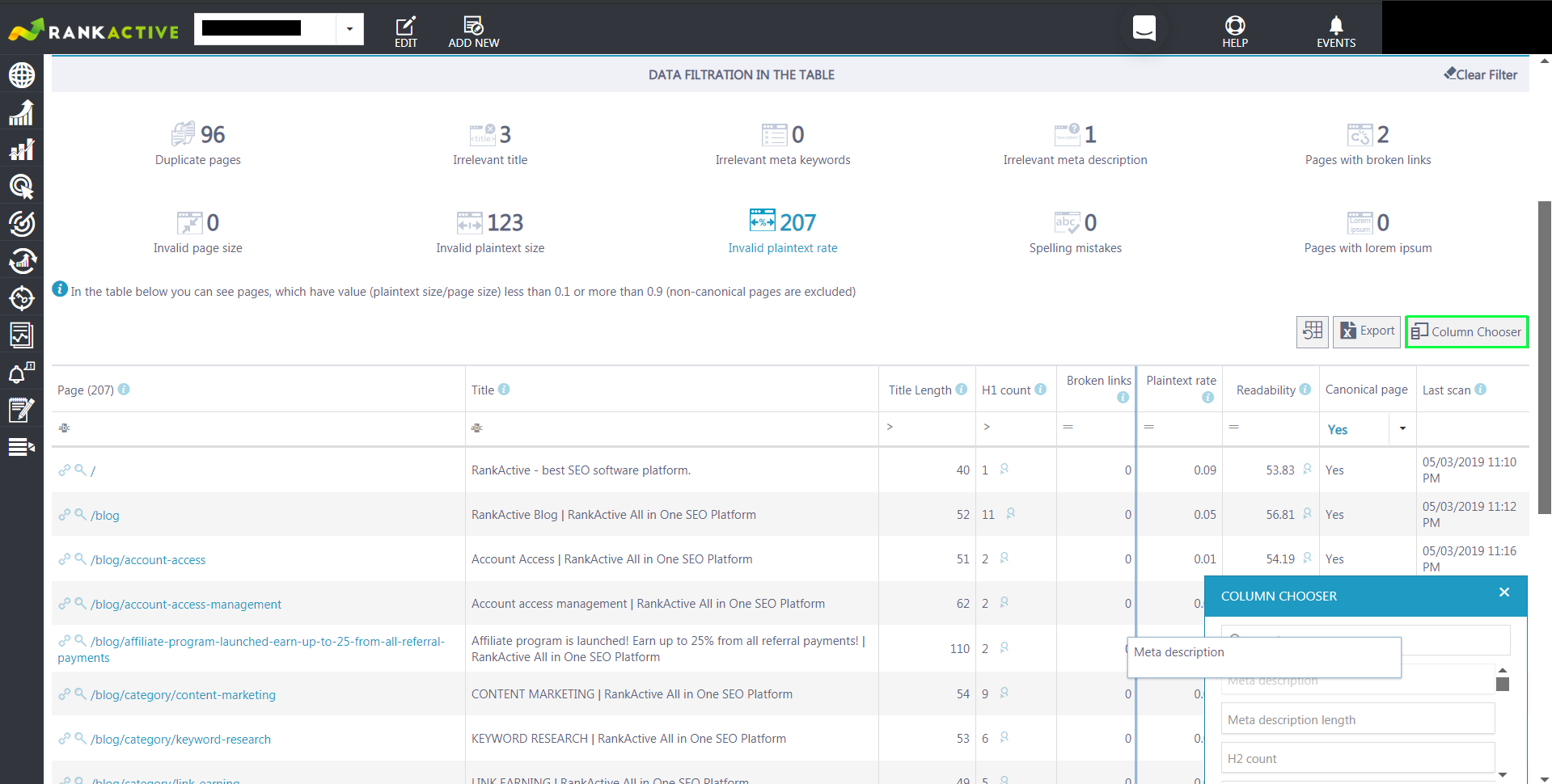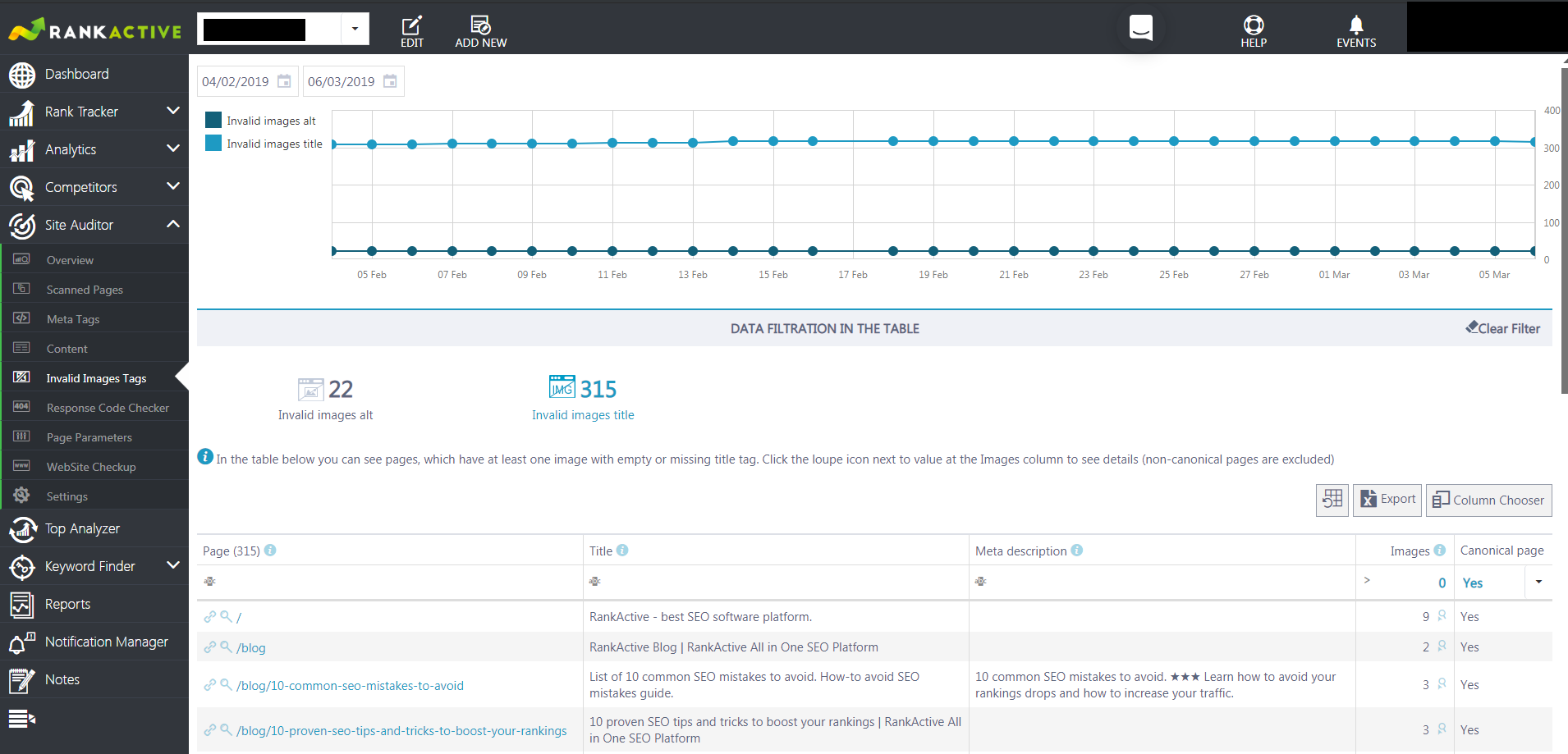Your Ultimate Guide to Running Content Audits Like a Pro
12 March 2019 Leave a comment CONTENT MARKETING, ON-PAGE SEO
What does “quality content” really mean? It rules user experience and has a direct impact on the conversion rates. Strictly speaking, content is in the core of any website as well as its design and navigation structure. Working hard on content creation is not enough – you also have to conduct regular audits to be on top of things.
Lots of SEO and content managers underestimate the value of a thorough content audit, but we’re sure you’re not one of them. If you read this, then you love working on improvements as much as we do. Together, we’ll figure out why content reviews are important and how to manage them quickly with the RankActive solution.
The Main Reasons to Conduct Content Audit
Any word appearing on the website concerns both search engine optimization and content marketing. They go hand in hand during the entire website’s existence, so there are two main perspectives for regular content health check-ups.
From the SEO perspective, web page rankings must be one of your biggest concerns. How often a website appears among the top 10 results and how many of your web pages take part in the competition – these two questions never leave the mind of the SEO expert.
Keeping in mind current rankings, you can compare them with the information from the content audit: bounce rates, word count in headings and descriptions, pages with broken links, etc. If some of these metrics are too high (for example, bounce rates) or they don’t meet the requirements of current search engine algorithms (such as too many words in the meta descriptions), they become an issue for improvements.
From the content marketing perspective, you put much effort to make content attractive to the reader. Marketers add more value to every keyword found by the SEO expert and transform plain text into a unique piece of information. Content audits give you an opportunity to get feedback.
Text readability, spelling mistakes, image tags – all of it impacts the first impression of the user, and you can figure out what pages need to be updated for the better marketing image.
What’s the best time for a content audit?
Only you have an answer to this question. Just like every web platform has its own marketing strategy, working with content is another individual aspect to consider. Usually, the audits’ frequency depends on how often new content is uploaded to the website and how long you have been working on the new content strategy. Also, you have to clearly realize why you start a content review. And this is the first step of any audit on your website.
From Start to Finish: 4 Steps to Conduct a Content Audit
Conducting an audit always implies a clear set of steps. By dividing the work into parts, you make sure you took all the metrics into account and considered necessary website changes and improvements.
Step 1: Define the Goals of This Content Audit
Why are you starting an audit in the first place? If you’re here, you probably have a couple of thoughts about that. Before moving to specific metrics and tools, take a simple sheet of paper to gather all of your ideas.
If this is your first audit ever, we’re here to share the most popular audit goals. You’ll probably be focused on several of these points, and more ideas may appear during your own brainstorming:
- Find out how to improve the organic search metric.
- Figure out which pages have the best performance metrics.
- Pinpoint any content gaps or pages with errors.
- Gather all the pages that need improvements in headings, meta descriptions, or image tags.
- Discover old pages that don’t reflect current business goals.
- Generate new ideas on content topics.
- Correct spelling mistakes and improve text readability, etc
Now a new content audit makes sense for your specific project. Let’s see how RankActive can help you collect the data you need.
Step 2: Learn More About User Behaviour
How much time do users spend on your website? What pages are the most popular? What bounce rate does a particular page have? All these questions should be answered if you want to gather performance metrics.
First of all, you have to make a list of all the links that need your attention. Fortunately, RankActive does all the work for you with its Website Analytics section.
Overview
This section contains the data from your Google Analytics account. When you have to cope with numerous SEO tasks and monitor several aspects at once, it’s handy to have everything in one place. In our case, we need to pay attention to the Content Analytics subsection.
First off, here are all the website pages placed according to their popularity. Apart from the sheet, there are also 2 graphs depicting pageviews by date and top 10 first level pageviews. And take a look at other metrics available under the upper graph:
- Pageviews
- Unique pageviews
- Per session
- Entrances
- Exit rate
- Average time on page
- Bounce rate
- Page values
This info you get straight away, no matter what goals you have regarding analytics. It was a general overview. Now let’s take a look at the specific pages.
Column Chooser
The sheet mentioned above can be customized according to your initial goals. To work things out, use the Column Chooser.
Maybe, you need the fullest overview of each page. Then, use all of the columns from Column Chooser and place them in any order you like. Or maybe, all you need is a bounce rate and pageviews for each page – in this case, your sheet will have only two columns:
Column Chooser not only helps to filter information, but it also builds up final reports that reflect crucial data without unwanted details. Your final step will be clicking on the Excel button and download all the available data to the Excel file.
Step 3: Gather All the Words and Images
RankActive’s Site Auditor lets you look at the website through the words, texts, spelling, and readability. Every detail matters as only text and visual content gives users a full perspective on what your website is about. Will they come back to read your blog or stay longer to learn more about your services? It all depends on you.
Overview
Site Auditor has a great Content subsection for you. When you appear there, the first thing you notice is a graph with metrics such as duplicate pages, invalid pages size, invalid plaintext rate, irrelevant title, etc. There are 9 metrics in the graph, and when you see them together, it’s easier to notice weak spots in your work. In our example, there are too many invalid plaintext rates:
Filters
Data filters are helpful if you want to find the pages with certain errors. For instance, we want to see pages with broken links. If you click on this metric, the sheet will display only the pages you need:
The full list of metrics in filters:
- Duplicate pages
- Invalid page size
- Irrelevant title
- Irrelevant meta keywords
- Irrelevant meta description
- Invalid plaintext size
- Invalid plaintext rate
- Spelling mistakes
- Pages with broken links
- Pages with lorem ipsum
Column Chooser
And finally, let’s take a look at all the content details you can gather in one sheet. Just like it was in Content Analytics, the sheet here is fully customizable. Moreover, you’ve got a way broader variety of metrics to put into the final sheet for the report. Apart from the page link and its title, you can gather nearly 40 other indexes.
These are some of the metrics examples:
- Title length
- H1 count
- Readability
- Meta description length
- Inlinks
- Outlinks
- Page size
- Load time
- Spelling check
- SSL used, etc.
For more information, check our Help Center.
Invalid Images Tags
It’s another Site Auditor’s subsection helping you rule your visual content. The sheet here is pretty similar to the previous one, except here you can add the number of images. And there are 2 main filters: invalid images alt and invalid images title.
The image alt text is an alternative description of a picture. As Google understands text better than visuals, crawlers will check your alt texts. If you include relative keywords, alternative texts are another good source of rankings. Plus, if an image won’t load on the website, alt texts would appear instead of it, and it’s extremely helpful for blind users who can’t see images but can check their description.
The image title text is an attribute with additional info about a picture. Strictly speaking, titles are not crawled by Googlebots, but some SEO experts prefer using both alt and title texts together to stay on the top of competition.
Step 4: Evaluate What to Do Next
Now when you have lots of new information, it’s time to use it for your own good. Let’s play a game called “Keep, Update, Delete”.
Keep
During your audit, you’ve probably noticed some pages that perform well and don’t have any issues to fix. They definitely should be kept for your next marketing efforts. Among such pages, there are usually some standard ones like FAQs or a page with the service description.
Update
Pages with errors or outdated content – it happens on every web platform. After the audit, you know exactly which pages contain data that needs your revision. Take a look at each page and make a list of improvements – these actions should become a part of the content strategy.
Delete
Are you sure a page requires any efforts? If not, consider deleting it. Let’s say there’s an article about an event in the past or pages with duplicate content. Maybe, you deal with an online shop, and it has several out-of-stock products. Do they need any space in your strategy? The audit allows detecting all the weaknesses.
That’s All for Your SEO Check-Up
The word “audit” sounds rather serious, so the process may be tiring for some marketing experts. But this is not our case for one simple reason – the RankActive team is doing its best to provide you with all the numbers within several clicks.
With our 14-days trial, you have time to gather initial statistics and get a report with our tool. And don’t forget about a bunch of other great features such as Rank Tracker, Keyword Finder, or Competitors Inspector. Have fun and come back for more great tricks that make your SEO life easier.
Tags: Analytics, content, SEO audit, Site Auditor
Like this article? There’s more where that came from.
- 5 Questions to Ask Yourself Before Paying for Rank Tracking Software
- 5 Serious Mistakes Beginner SEOs Make and How to Fix Them
- Why We Use Google’s New Link Attributes and You Should Too
- Title and Description in 2021: Why Google Rewrites SEOs’ Meta Tags
- What We Should Learn From Google’s “About This Result” Feature


